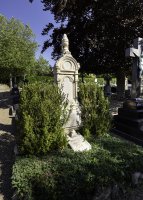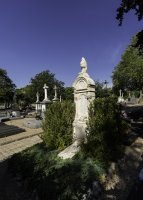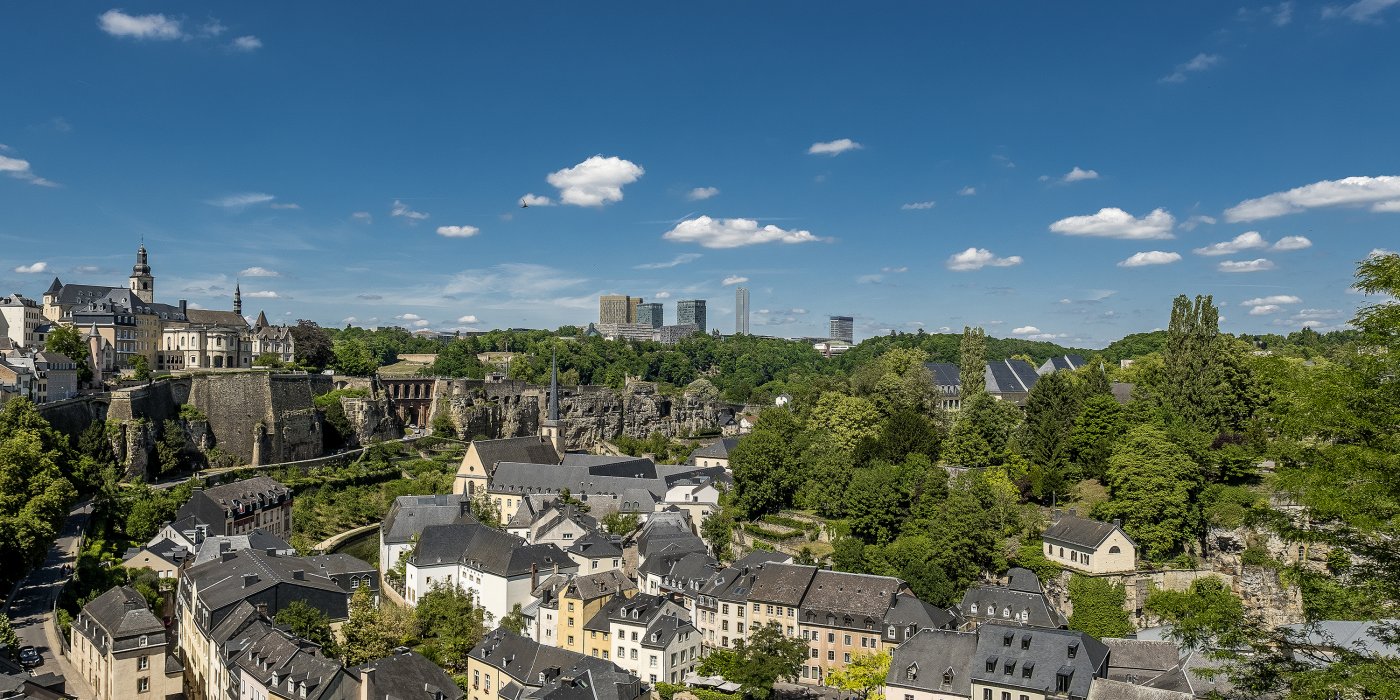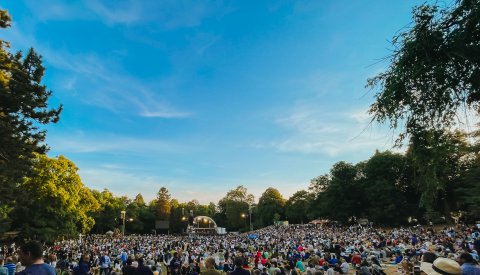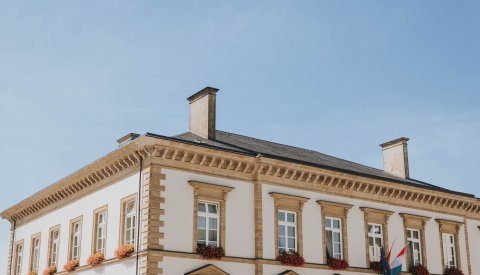Description
Pierre François Joseph Junck was born in 1839 in Clausen. His father, François Xavier Junck, was a miller.On 1 October 1859, at the age of 20, he began working for the Compagnie des chemins de fer de l'Est (Eastern Railway Company), three days before the inauguration of Luxembourg Central Station.
During the Franco-Prussian War of 1870, he took care of the wounded, and his service earned him the official recognition of the French Red Cross. Thanks to his outstanding professionalism and strong people skills, he quickly rose through the ranks at the railway: in 1872 he was promoted to the position of stationmaster of the Wilwerwiltz train station, then in 1873 he accepted the same position at the Dommeldange train station, where he stayed until being appointed stationmaster of Luxembourg Central Station in 1875. He held that position until he retired in 1911.

The 40th and 50th anniversaries of his service at the railway were marked with lavish celebrations complete with bands and many political leaders in attendance. Junck was consulted in 1890 about expanding Luxembourg Central Station, and then again in 1903 and 1908 regarding construction plans for a new passenger train station. In 1912, in recognition of his contributions, a bust of him, created by the artist Pierre Federspiel, was placed above the entrance of the former administrative wing of the new Luxembourg Central Station.
The effigy contains subtly placed insignia of the Enfants de la Concorde Fortifiée Masonic lodge, into which Joseph Junck was inducted on 23 August 1872 and where he served as Grand Master from 1890 until his death in 1922. Joseph Junck, who never married, was a dedicated philanthropist whose good works earned him popularity and respect. He was a member of the Oeuvre Internationale pour la Protection de l'Enfance (International Charity for Child Protection) and also had close ties to the scout movement, which was founded in 1914. He was also a founding member of the Aéro-Club Luxembourgeois (Luxembourg Aero Club), which was established in 1909. Junck was also an active trade unionist: he was a member of the Association des employés des chemins de fer (Association of Railway Employees) (Landesverband), and served as its president from 1909 to 1921. He was an ardent supporter of the City of Luxembourg's charity. In 1909, he was awarded the title of Commander of the Order of the Crown of Italy in recognition of his efforts on behalf of Italian immigrants and the establishment of the Italian school. Dedicated to building the country's legacy, Junck was instrumental in the initiative to erect monuments to J. A. Zinnen – the composer of the national anthem – and Capt. Guillaume Weydert, who built the model of the Fortress of Luxembourg, and in having their ashes transferred to Notre-Dame Cemetery.
In 1906, Junck became the founding president of the Société Anonyme pour la Construction et l'Exploitation d'un Crématoire dans le Grand-Duché de Luxembourg (Corporation for the Construction and Operation of a Crematorium in the Grand Duchy of Luxembourg). After his death on 27 July 1922, a funeral procession accompanied his remains to Luxembourg Central Station, from where they were taken to the Mayence crematorium. His ashes were interred in his grave during a civil ceremony at Notre-Dame Cemetery. The tombstone bears the insignia of the Masonic lodge.
His civic engagement earned him many honours: in addition to those already mentioned, he was awarded the ranks of Knight of the Legion of Honour, Officer of the Luxembourgish Order of the Oak Crown, Knight of the Order of Leopold of Belgium, Knight of the Order of Aldophe of Nassau, Knight of the Order of Merit of the Prussian Crown, Knight of the Order of the Red Eagle of the Kingdom of Prussia, Knight of the Order of Zähringer Löwe, and Knight of the Order of Badischer Löwe. In 1912, the street named Rue des tramways opposite Luxembourg Central Station was renamed Rue Joseph Junck.
